Brittany Hince Siwicki
Advisor: Mercedes Garcia-Holguera & Lancelot Coar
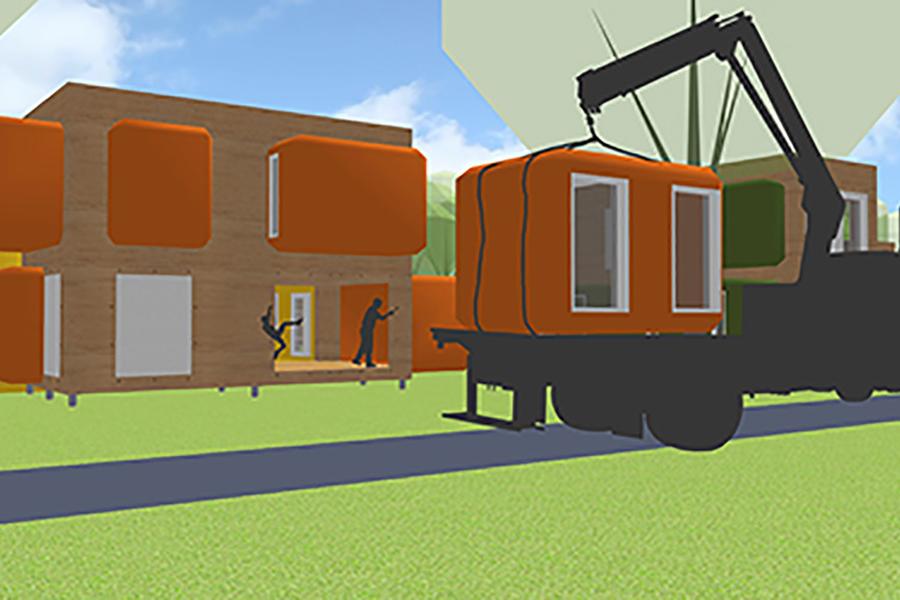
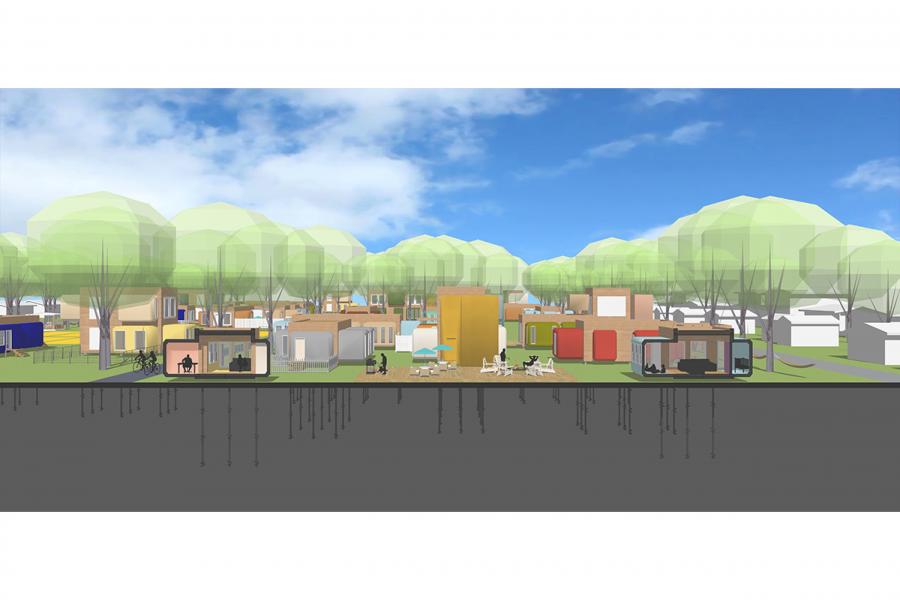
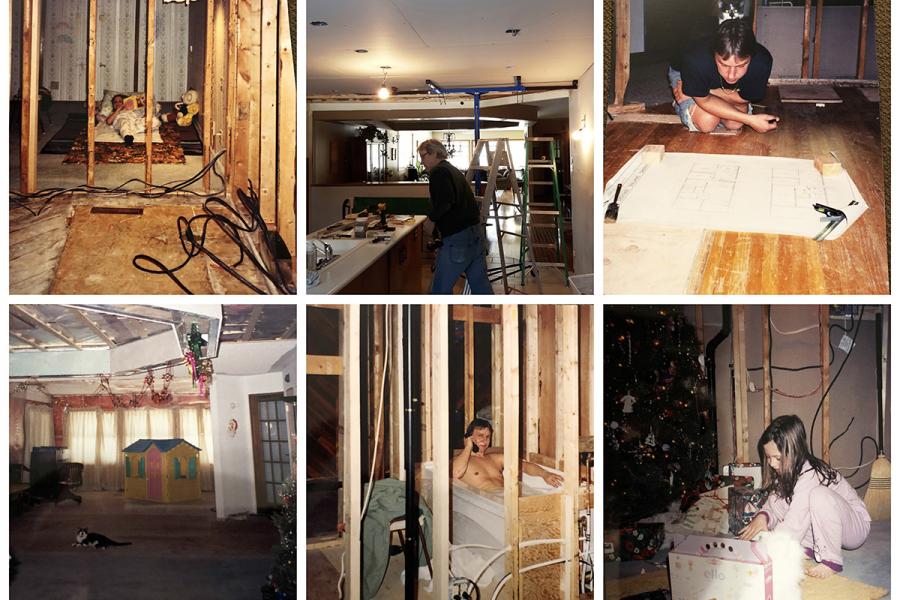
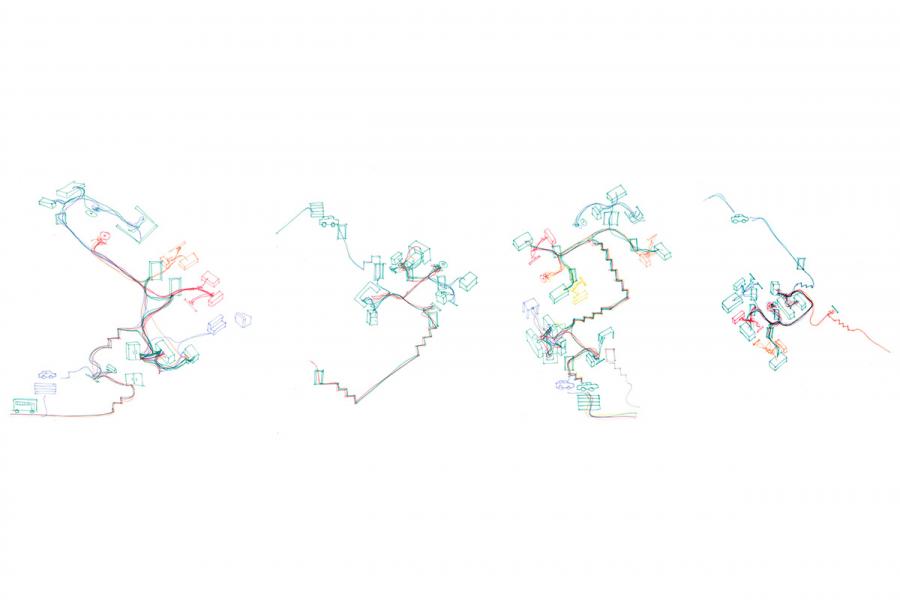
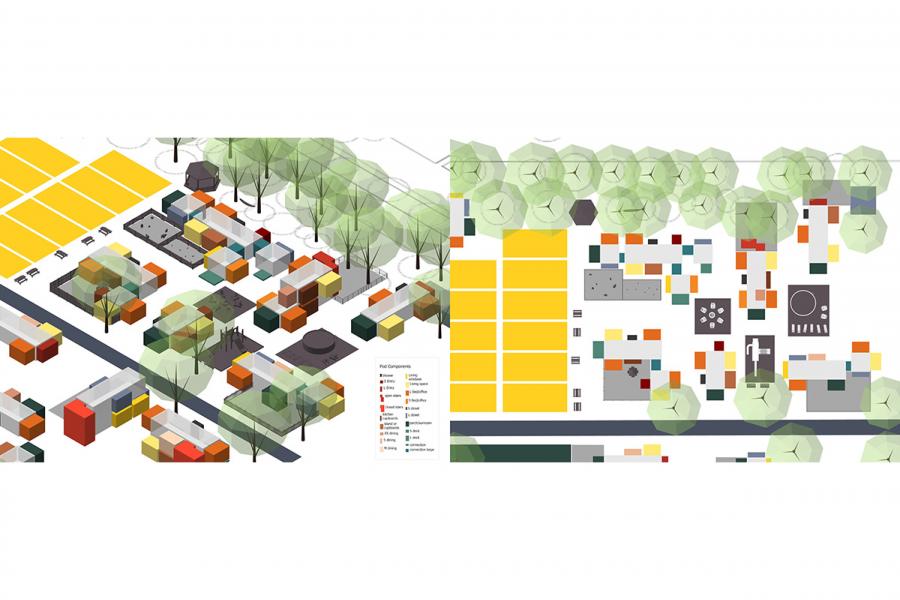
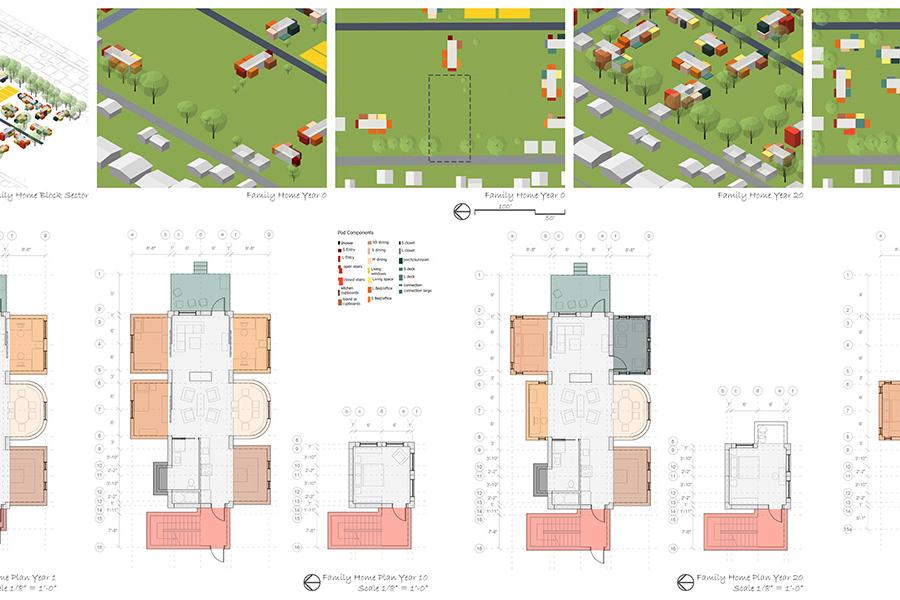
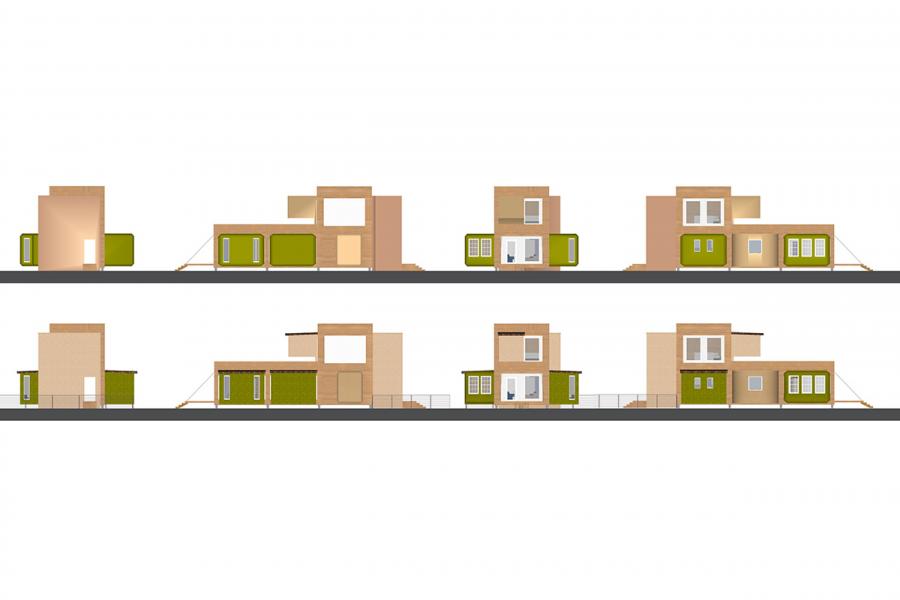
Desire Home: A New Typology of Adaptable Intentional Living
Domestic architecture has remained stagnant for several decades without any significant changes to how houses are designed, built or occupied. However, people, society and family types are constantly evolving; why then do houses not have the capabilities to evolve with us? All houses promote a way of living, which if designed intentionally can positively impact the inhabitants’ lives. Yet, tract housing tries to force a multitude of different people into a single way of living. “Belief in the significance of architecture is premised on the notion that we are, for better or for worse, different people in different places.”1
This thesis set out to determine a flexible, yet semi-standardized way in which to design homes for anyone; homes which are suited to current desires and needs and that have the capacity to evolve alongside the inhabitants. The environments that one dwells in are directly linked to their behaviour and expression of self and therefore must be carefully curated in order to provoke their ideal self.2 “Our home’s articulations are taken up by and housed in our bodies.”3 Home, habits and identity are inseparable.
Memories, habits and desires are important factors in determining an ideal home. Through the consideration of these three elements, an architect can curate a unique home that satisfies a highly specific way of living. As children grow older, they rearrange their bedroom in order for the space to better meet their needs. While they may not consciously process why, their desire for change is about a new desired way of living. What if this simple rearranging could happen on the larger scale of the entire home; walls, floors, furniture, all able to interact and move to best suit the current desired life of the inhabitants. Ultimately, this newly developed typology of housing, the Pod House, enables this large scale change. It also enables those without the ability or desire to participate in construction, to easily transform their entire homes. This direct engagement instills a deep sense of value, as well as the confidence that the current home is providing the best possible life experience.
The final housing typology consists of a kit of parts that can be quickly assembled on site. The house core is chosen from one of three possible sizes and pods for various life functions are then added onto the core. Certain pods are standardized, such as a large office, whereas others can be completely customizable, a nap pod maybe?! This system has the potential to be developed in the framework of open-source architecture. There is also the potential for inhabitants to develop and build their own pods, using more conventional building materials. This ability for the system to hybridize naturally enriches the home environment and provides for vibrant and unique communities. Christopher Day suggests that “places in which we can see aging buildings, repair and modifications… are places with a healthy vigor. Places that remain unchanged… risk becoming moribund.”4 An innate ability to evolve is crucial. John Turner even “concluded that…the flexibility, adaptability, and self-determination of [squatter] settlements – the ability they provide for their inhabitants to express themselves in building – made them better in some ways that American standardized housing.”5 When we live in our ideal home, whether that means the physical layout, the aesthetic appearance, the atmospheric feel, or a combination of the three, we enable ourselves to be our best selves. Architecture surrounds every moment of our lives, the home environment must embrace this and nurture us.
1Alain De Botton, The Architecture of Happiness (New York: Hamish Hamilton, 2006), 10.
2De Botton, The Architecture of Happiness, 12-13.
3Kirsten Jacobson, “A Developed Nature: A Phenomenological Account of the Experience of Home,” Continental Philosophy Review 42, no.3 (2009): 367.
4Christopher Day, Places of the Soul: Architecture and the Environmental Design as a Healing Art (Wellingborough: The Aquarian Press, 1990), 151.
5Architecture of the Everyday, ed. Steven Harris and Deborah Berke (New York: Princeton Architectural Press, 1997), 98.
